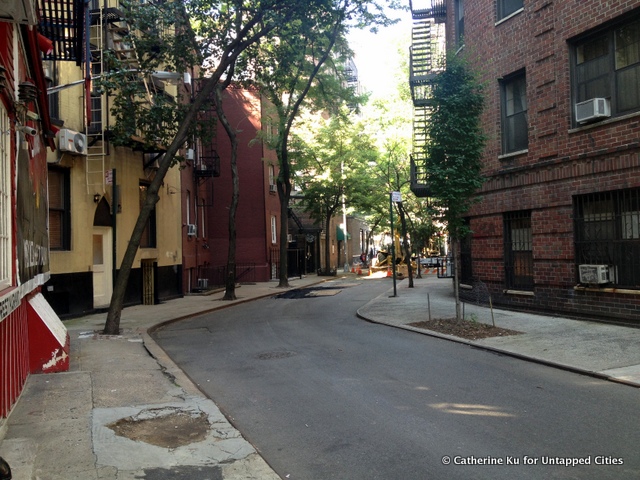Upon first glance, Greenwich Village’s Minetta Lane and Minetta Street seem like any other small streets in NYC. Lined with residential buildings and popular institutions like the Minetta Lane Theatre and Italian restaurant Perla, the street connects larger thoroughfares 6th Ave and MacDougal Street, home to the famed Minetta Tavern. Halfway between 6th and MacDougal, Minetta Lane intersects Minetta Street, with the latter’s curved path defying the typical NYC grid. The odd shape of the street is one of the most visible hints as to the area’s unique history. Today, the quaint, peaceful appearance of the two streets belies its dynamic and often tumultuous past as a patch of farmland and a brook, as “Little Africa,” home to a growing African-American population, as the site of frequent stabbings and murders and even as the seedy backdrop for a short thriller by Stephen Crane.
According to an article by the New York Times, in the mid-17th century, Dutch settlers allowed “partially-freed” slaves to farm a little patch of land for a fee on the southern end of Manhattan. These slaves found homes around a brook that flowed into the Hudson River, which the Algonquin Indians called “Mannette,” or “Spirit Water” or “Demon Water,” and which the Dutch later called “Mintje Kill,” or “little stream.” Over time, the brook became known as “Minetta.” While Minetta Brook was later moved underground (its inconvenient location posed a barrier to expansion) in the 1820s, its traces can still be found today in the design of the two Minettas (and under its manhole covers).
Before builders covered the brook with wooden boards for convenience, black settlers created a path along the stream, which later became known as the Negroe’s Causeway (today’s Minetta Street). Of course, the Village is known as the backdrop of the gay pride movement, but who knew that it was also home to a large African American population after slavery was abolished in New York in 1827? By the mid 19th century, the area was known as “Little Africa.”
Though the area has a majority white population today, 19th-and-20th-century Minetta Lane and Street were home to prostitutes, gay bars and “black and tan” saloons that catered to blacks and Irish gangsters. In his short story “Minetta Lane,” Stephen Crane called Minetta Lane and Street “two of the most enthusiastically murderous thoroughfares in New York.” But magically, it seems, increased police crackdowns — ordered by then-commissioner Teddy Roosevelt — and efforts by developers to turn the area’s slums into tenement housing slowly straightened the Minettas’ reputation. By the 1920s, a New York Times article, according to Greenwich Village History blog, called the area “as free from noise and as peaceful as though miles away.”
Even today’s residential street certainly is peaceful, but under all the gentrification, there’s still a bit of Minetta’s unconventional origins peeking through. At the corner of Minetta Lane and 6th Ave is Minetta Green Park which, according to Park Odyssey, contains a tribute to the street’s stream origins in the form of etchings of trout in the cement (below).
The noise of the city can still be heard on Minetta Lane today, and the area’s crooked geometry — a reminder of the brook that used to run along Minetta Street — still hasn’t been straightened.
Get in touch with the author @catku.






